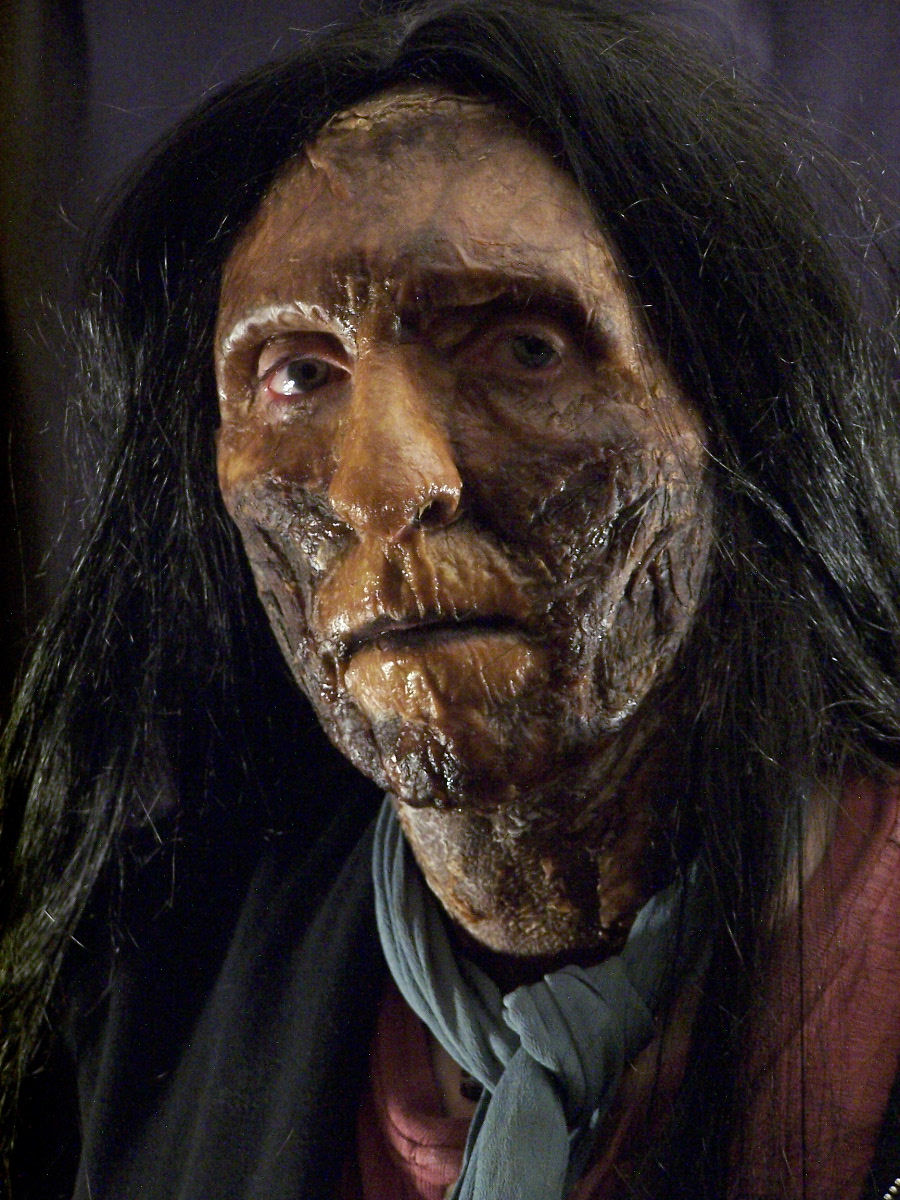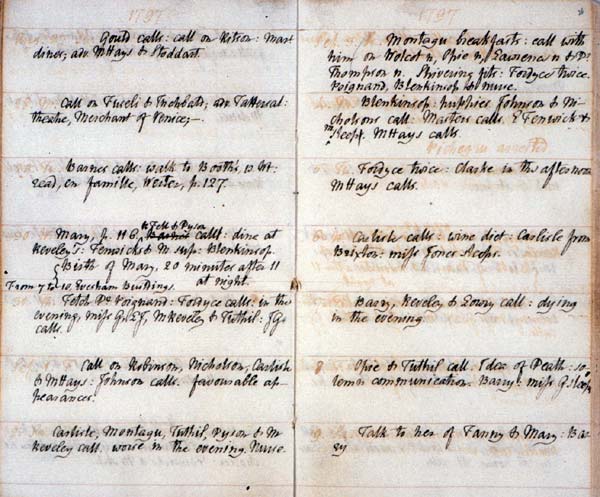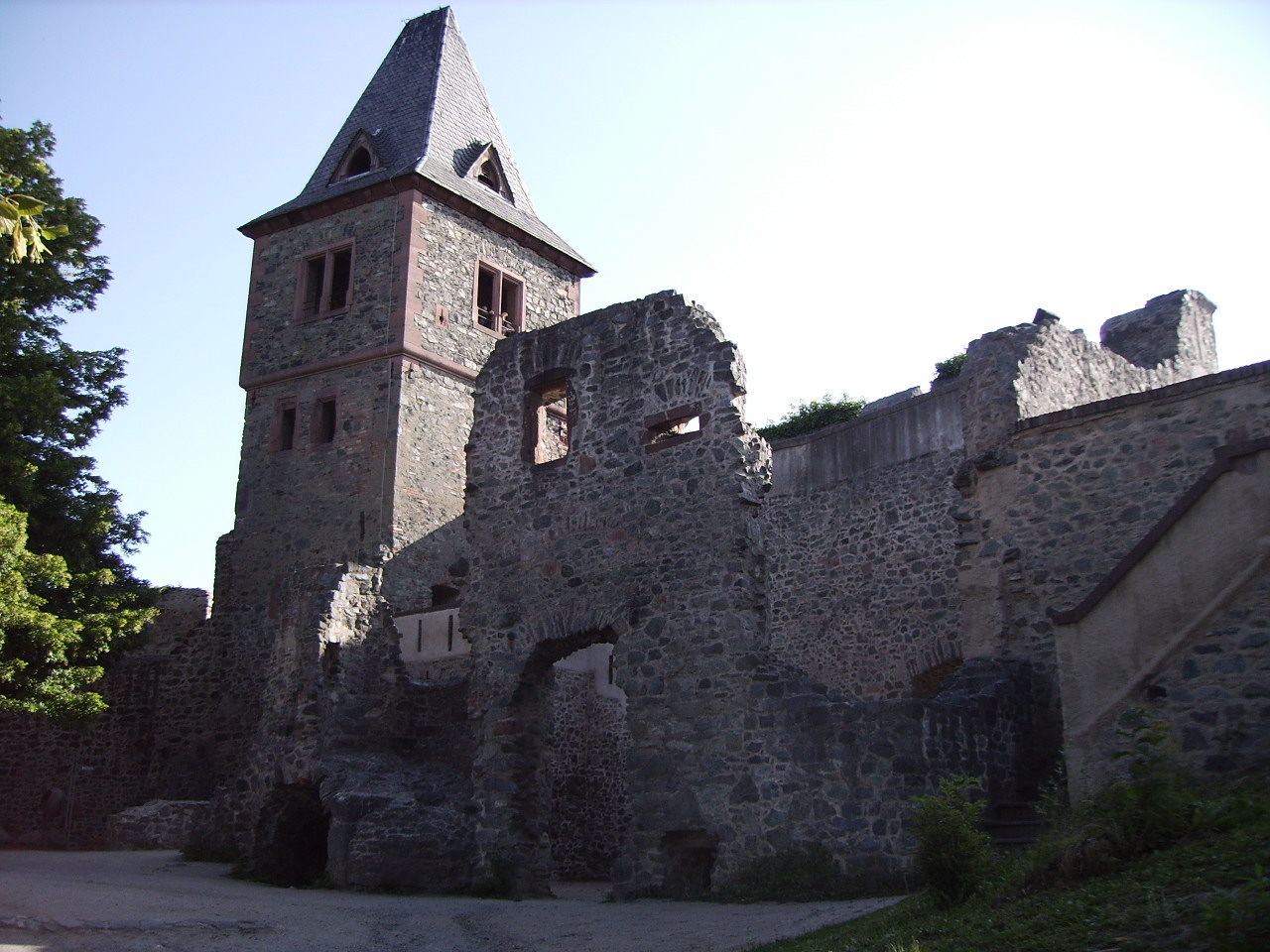|
Frankenstein
''Frankenstein; or, The Modern Prometheus'' is an 1818 novel written by English author Mary Shelley. ''Frankenstein'' tells the story of Victor Frankenstein, a young scientist who creates a sapient creature in an unorthodox scientific experiment. Shelley started writing the story when she was 18, and the first edition was published anonymously in London on 1 January 1818, when she was 20. Her name first appeared in the second edition, which was published in Paris in 1821. Shelley travelled through Europe in 1815, moving along the river Rhine in Germany, and stopping in Gernsheim, away from Frankenstein Castle, where, two centuries before, an alchemist had engaged in experiments.This seems to mean Johann Konrad Dippel (1673–1734), one century before (not two). For Dippel's experiments and the possibility of connection to ''Frankenstein'' see the Dippel article. She then journeyed to the region of Geneva, Switzerland, where much of the story takes place. Galvanis ... [...More Info...] [...Related Items...] OR: [Wikipedia] [Google] [Baidu] |
Victor Frankenstein
Victor Frankenstein is a fictional character and the main protagonist and title character in Mary Shelley's 1818 novel, ''Frankenstein; or, The Modern Prometheus''.. He is an Italian-Swiss scientist (born in Naples, Italy) who, after studying chemical processes and the decay of living things, gains an insight into the creation of life and gives life to his own creature (often referred to as Frankenstein's monster, or often colloquially referred to as simply "Frankenstein"). Victor later regrets meddling with nature through his creation, as he inadvertently endangers his own life and the lives of his family and friends when the creature seeks revenge against him. He is first introduced in the novel when he is seeking to catch the monster near the North Pole and is saved from near death by Robert Walton and his crew. Some aspects of the character are believed to have been inspired by 17th-century alchemist Johann Konrad Dippel. Certainly, the author and people in her enviro ... [...More Info...] [...Related Items...] OR: [Wikipedia] [Google] [Baidu] |
Frankenstein's Monster
Frankenstein's monster or Frankenstein's creature, often referred to as simply "Frankenstein", is a fictional character who first appeared in Mary Shelley's 1818 novel ''Frankenstein; or, The Modern Prometheus''. Shelley's title thus compares the monster's creator, Victor Frankenstein, to the mythological character Prometheus, who fashioned humans out of clay and gave them fire. In Shelley's Gothic story, Victor Frankenstein builds the creature in his laboratory through an ambiguous method based on a scientific principle he discovered. Shelley describes the monster as tall and emotional. The monster attempts to fit into human society but is shunned, which leads him to seek revenge against Frankenstein. According to the scholar Joseph Carroll, the monster occupies "a border territory between the characteristics that typically define protagonists and antagonists". Frankenstein's monster became iconic in popular culture, and has been featured in various forms of media, incl ... [...More Info...] [...Related Items...] OR: [Wikipedia] [Google] [Baidu] |
Mary Shelley
Mary Wollstonecraft Shelley (; ; 30 August 1797 – 1 February 1851) was an English novelist who wrote the Gothic novel '' Frankenstein; or, The Modern Prometheus'' (1818), which is considered an early example of science fiction. She also edited and promoted the works of her husband, the Romantic poet and philosopher Percy Bysshe Shelley. Her father was the political philosopher William Godwin and her mother was the philosopher and women's rights advocate Mary Wollstonecraft. Mary's mother died less than a fortnight after giving birth to her. She was raised by her father, who provided her with a rich if informal education, encouraging her to adhere to his own anarchist political theories. When she was four, her father married a neighbour, Mary Jane Clairmont, with whom Mary came to have a troubled relationship. In 1814, Mary began a romance with one of her father's political followers, Percy Bysshe Shelley, who was already married. Together with her stepsister, Claire C ... [...More Info...] [...Related Items...] OR: [Wikipedia] [Google] [Baidu] |
Frankenstein Castle
Frankenstein Castle (german: Burg Frankenstein) is a hilltop castle in the Odenwald overlooking the city of Darmstadt in Germany. This castle may have been an inspiration for Mary Shelley when she wrote her 1818 Gothic novel ''Frankenstein; or, The Modern Prometheus''. Location Frankenstein Castle is in southern Hesse, Germany, on the spurs of the Odenwald mountain range at an elevation of close to the southern outskirts of Darmstadt. It is one of many historic castles along the Hessian Bergstraße Route, also famous for its vineyards and its mild climate. Meaning of "Frankenstein" Frankenstein is a German name consisting of two words: The Franks are a Germanic tribe and "stein" is the German word for "stone". Accordingly, the meaning of Frankenstein is "Stone of the Franks". The word "stein" is common in names of landscapes, places and castles in Germany. Consequently, the term "Frankenstein" is a rather ordinary name for a castle in this region. History Before ... [...More Info...] [...Related Items...] OR: [Wikipedia] [Google] [Baidu] |
Johann Konrad Dippel
Johann Konrad Dippel, also spelled Johann Conrad Dippel (10 August 1673 – 25 April 1734), was a German Pietist theologian, physician, alchemist and occultist. Life Dippel was born at Castle Frankenstein near Mühltal and Darmstadt, and therefore once at his school the addendum ''Franckensteinensis'' and once at his university the addendum ''Franckensteina-Strataemontanus'' was used. He studied theology, philosophy and alchemy at the University of Giessen, obtaining a master's degree in theology in 1693. He published many theological works under the name Christianus Demócritus, and most of them are still preserved. Circa 1700, he turned to Hermetic studies and alchemy as a key to nature. Between 1700 and 1702, he engaged in a bitter dispute with the Reformed Court Preacher Conrad Broeske in Offenbach, with whom he shared millenarian hopes for soon-coming renewal in Christendom. He accused Broeske of compromise and collusion with the authorities after Broeske refused to pub ... [...More Info...] [...Related Items...] OR: [Wikipedia] [Google] [Baidu] |
Gothic Novel
Gothic fiction, sometimes called Gothic horror in the 20th century, is a loose literary aesthetic of fear and haunting. The name is a reference to Gothic architecture of the European Middle Ages, which was characteristic of the settings of early Gothic novels. The first work to call itself Gothic was Horace Walpole's 1764 novel ''The Castle of Otranto'', later subtitled "A Gothic Story". Subsequent 18th century contributors included Clara Reeve, Ann Radcliffe, William Thomas Beckford, and Matthew Lewis. The Gothic influence continued into the early 19th century, works by the Romantic poets, and novelists such as Mary Shelley, Charles Maturin, Walter Scott and E. T. A. Hoffmann frequently drew upon gothic motifs in their works. The early Victorian period continued the use of gothic, in novels by Charles Dickens and the Brontë sisters, as well as works by the American writers Edgar Allan Poe and Nathaniel Hawthorne. Later prominent works were ''Dracula'' by Bram Stoker ... [...More Info...] [...Related Items...] OR: [Wikipedia] [Google] [Baidu] |
Gothic Fiction
Gothic fiction, sometimes called Gothic horror in the 20th century, is a loose literary aesthetic of fear and haunting. The name is a reference to Gothic architecture of the European Middle Ages, which was characteristic of the settings of early Gothic novels. The first work to call itself Gothic was Horace Walpole's 1764 novel ''The Castle of Otranto'', later subtitled "A Gothic Story". Subsequent 18th century contributors included Clara Reeve, Ann Radcliffe, William Thomas Beckford, and Matthew Lewis. The Gothic influence continued into the early 19th century, works by the Romantic poets, and novelists such as Mary Shelley, Charles Maturin, Walter Scott and E. T. A. Hoffmann frequently drew upon gothic motifs in their works. The early Victorian period continued the use of gothic, in novels by Charles Dickens and the Brontë sisters, as well as works by the American writers Edgar Allan Poe and Nathaniel Hawthorne. Later prominent works were '' Dracula'' by Bra ... [...More Info...] [...Related Items...] OR: [Wikipedia] [Google] [Baidu] |
Science Fiction
Science fiction (sometimes shortened to Sci-Fi or SF) is a genre of speculative fiction which typically deals with imaginative and futuristic concepts such as advanced science and technology, space exploration, time travel, parallel universes, extraterrestrial life, sentient artificial intelligence, cybernetics, certain forms of immortality (like mind uploading), and the singularity. Science fiction predicted several existing inventions, such as the atomic bomb, robots, and borazon, whose names entirely match their fictional predecessors. In addition, science fiction might serve as an outlet to facilitate future scientific and technological innovations. Science fiction can trace its roots to ancient mythology. It is also related to fantasy, horror, and superhero fiction and contains many subgenres. Its exact definition has long been disputed among authors, critics, scholars, and readers. Science fiction, in literature, film, television, and other media, ... [...More Info...] [...Related Items...] OR: [Wikipedia] [Google] [Baidu] |
Horror Fiction
Horror is a genre of fiction which is intended to frighten, scare, or disgust. Horror is often divided into the sub-genres of psychological horror and supernatural horror, which is in the realm of speculative fiction. Literary historian J. A. Cuddon, in 1984, defined the horror story as "a piece of fiction in prose of variable length... which shocks, or even frightens the reader, or perhaps induces a feeling of repulsion or loathing". Horror intends to create an eerie and frightening atmosphere for the reader. Often the central menace of a work of horror fiction can be interpreted as a metaphor for larger fears of a society. Prevalent elements of the genre include ghosts, demons, vampires, werewolves, ghouls, the Devil, witches, monsters, extraterrestrials, dystopian and post-apocalyptic worlds, serial killers, cannibalism, cults, dark magic, satanism, the macabre, gore and torture. History Before 1000 The horror genre has ancient origins, with roots in ... [...More Info...] [...Related Items...] OR: [Wikipedia] [Google] [Baidu] |
Horror Fiction
Horror is a genre of fiction which is intended to frighten, scare, or disgust. Horror is often divided into the sub-genres of psychological horror and supernatural horror, which is in the realm of speculative fiction. Literary historian J. A. Cuddon, in 1984, defined the horror story as "a piece of fiction in prose of variable length... which shocks, or even frightens the reader, or perhaps induces a feeling of repulsion or loathing". Horror intends to create an eerie and frightening atmosphere for the reader. Often the central menace of a work of horror fiction can be interpreted as a metaphor for larger fears of a society. Prevalent elements of the genre include ghosts, demons, vampires, werewolves, ghouls, the Devil, witches, monsters, extraterrestrials, dystopian and post-apocalyptic worlds, serial killers, cannibalism, cults, dark magic, satanism, the macabre, gore and torture. History Before 1000 The horror genre has ancient origins, with roots in ... [...More Info...] [...Related Items...] OR: [Wikipedia] [Google] [Baidu] |
Novel
A novel is a relatively long work of narrative fiction, typically written in prose and published as a book. The present English word for a long work of prose fiction derives from the for "new", "news", or "short story of something new", itself from the la, novella, a singular noun use of the neuter plural of ''novellus'', diminutive of ''novus'', meaning "new". Some novelists, including Nathaniel Hawthorne, Herman Melville, Ann Radcliffe, John Cowper Powys, preferred the term "romance" to describe their novels. According to Margaret Doody, the novel has "a continuous and comprehensive history of about two thousand years", with its origins in the Ancient Greek and Roman novel, in Chivalric romance, and in the tradition of the Italian renaissance novella.Margaret Anne Doody''The True Story of the Novel'' New Brunswick, NJ: Rutgers University Press, 1996, rept. 1997, p. 1. Retrieved 25 April 2014. The ancient romance form was revived by Romanticism, especially the histor ... [...More Info...] [...Related Items...] OR: [Wikipedia] [Google] [Baidu] |
Lord Byron
George Gordon Byron, 6th Baron Byron (22 January 1788 – 19 April 1824), known simply as Lord Byron, was an English romantic poet and peer. He was one of the leading figures of the Romantic movement, and has been regarded as among the greatest of English poets. Among his best-known works are the lengthy narratives ''Don Juan'' and '' Childe Harold's Pilgrimage''; many of his shorter lyrics in '' Hebrew Melodies'' also became popular. Byron was educated at Trinity College, Cambridge, later traveling extensively across Europe to places such as Italy, where he lived for seven years in Venice, Ravenna, and Pisa after he was forced to flee England due to lynching threats. During his stay in Italy, he frequently visited his friend and fellow poet Percy Bysshe Shelley. Later in life Byron joined the Greek War of Independence fighting the Ottoman Empire and died leading a campaign during that war, for which Greeks revere him as a folk hero. He died in 1824 at the age of 3 ... [...More Info...] [...Related Items...] OR: [Wikipedia] [Google] [Baidu] |
_Irish_Frankenstein_(cropped).jpg)










